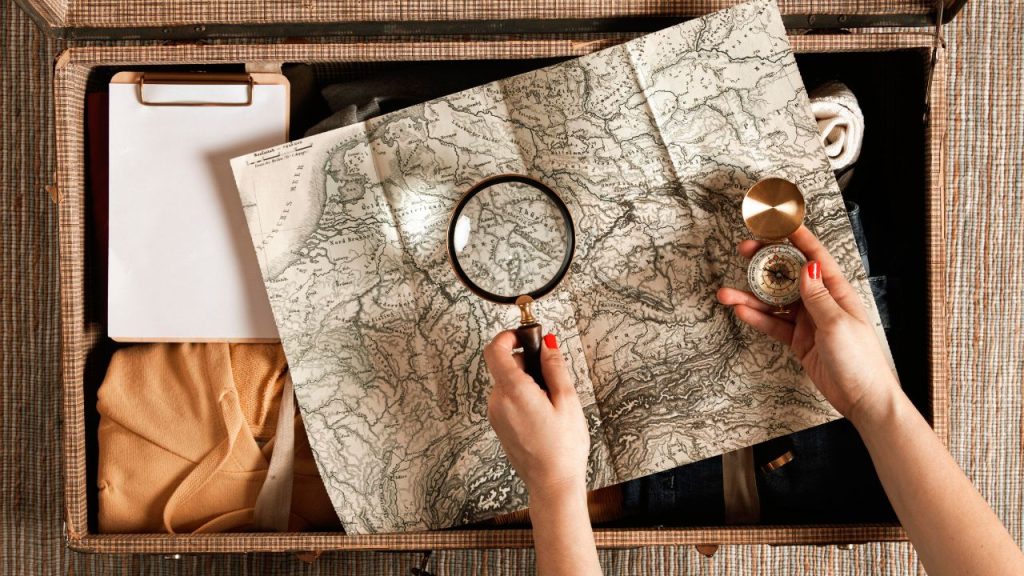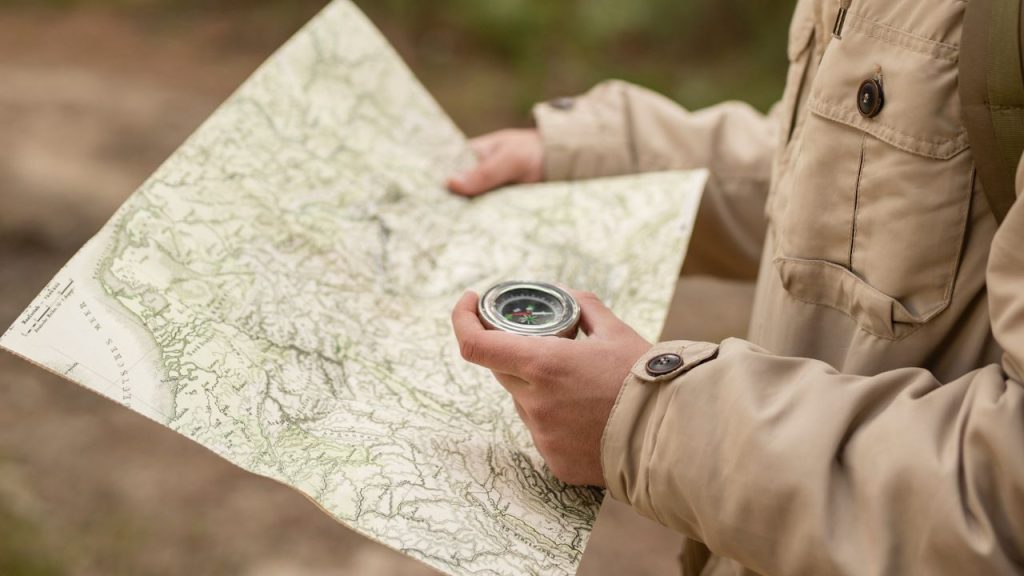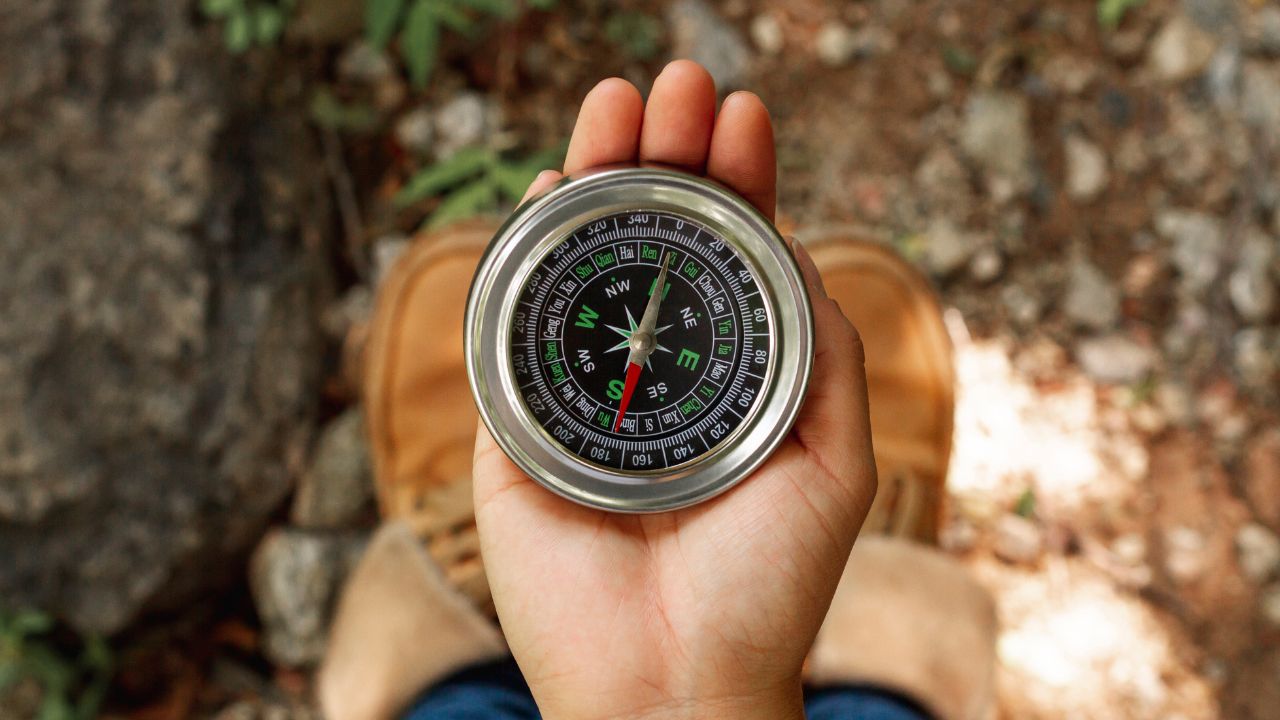As an avid outdoorsman, I’ve spent countless hours exploring the wilderness, and one of the most essential skills I’ve learned is navigating with a compass.
When you’re out in the wild, far from the comfort of your GPS-enabled devices, knowing how to use a compass can be a lifesaver.
In this article, I’ll share my knowledge and experience on how to navigate using a compass while camping.
Understanding the Basics of a Compass
Before we dive into the nitty-gritty of navigation, let’s cover the basics of a compass. A compass is a simple yet powerful tool that consists of a magnetized needle that always points towards the earth’s magnetic north.
The compass housing is marked with cardinal directions: north, east, south, and west, as well as degrees from 0 to 360.
It’s important to note that the magnetic north is not the same as the true north (the geographic north pole). The difference between the two is called magnetic declination, which varies depending on your location. To ensure accurate navigation, you’ll need to adjust your compass for the declination in your area.
Setting Up Your Compass
To set up your compass for navigation, follow these steps:
- Place the compass on a flat surface and ensure that the needle is free to rotate.
- Rotate the housing until the orienting arrow lines up with the magnetic needle.
- Adjust for the magnetic declination in your area by adding or subtracting the declination angle from the compass reading.
Reading a Topographic Map

A topographic map is an essential companion to your compass when navigating in the wilderness. These maps show the terrain’s elevation, natural features, and human-made structures. Learning to read a topographic map will help you plan your route, identify landmarks, and estimate distances.
To read a topographic map, familiarize yourself with the map’s legend, scale, and contour lines. Contour lines connect points of equal elevation and help you visualize the terrain’s shape. Closer contour lines indicate steeper slopes, while wider-spaced lines represent gentler inclines.
Taking a Bearing
Taking a bearing is the process of determining the direction from your current location to a desired destination. To take a bearing, follow these steps:
- Place the compass on the map, aligning one of the straight edges with your current location and your desired destination.
- Rotate the compass housing until the orienting lines are parallel to the map’s north-south grid lines.
- Read the bearing at the index line, which is the number at the front of the compass housing.
Following a Bearing
Once you’ve taken a bearing, it’s time to follow it to reach your destination. To follow a bearing:
- Hold the compass level in front of you, with the direction of travel arrow pointing away from you.
- Rotate your body until the magnetic needle aligns with the orienting arrow.
- Look up and identify a landmark in the distance that aligns with your bearing.
- Walk towards the landmark, periodically checking your compass to ensure you’re staying on course.
In the wilderness, you’ll often encounter obstacles like dense vegetation, cliffs, or bodies of water that force you to deviate from your planned route. To navigate around obstacles:
- When you reach the obstacle, take a new bearing that leads you around it.
- Follow the new bearing until you’ve cleared the obstacle.
- Take another bearing to your original destination and continue navigating.
Estimating Distance

Estimating the distance you’ve traveled is crucial for staying on track and reaching your destination. There are several methods for estimating distance:
- Pace counting: Count the number of steps you take over a known distance (e.g., 100 meters), then use this information to estimate distances based on the number of steps taken.
- Time: Estimate your walking speed and multiply it by the time you’ve been walking to calculate the distance covered.
- Map scale: Use the map’s scale to estimate distances between landmarks or waypoints.
Practice Makes Perfect
Like any skill, navigating with a compass requires practice. Before setting out on a multi-day camping trip, spend time in a familiar outdoor area practicing your navigation skills. Take bearings, follow them, and compare your results with known landmarks.
The more you practice, the more comfortable and confident you’ll become in your ability to navigate using a compass.
Frequently Asked Questions
What is the difference between true north and magnetic north?
True north is the direction towards the geographic north pole, while magnetic north is the direction the compass needle points, which is influenced by the earth’s magnetic field. The difference between the two is called magnetic declination.
How do I adjust my compass for magnetic declination?
To adjust for magnetic declination, add or subtract the declination angle from your compass reading. The declination angle varies depending on your location and can be found on topographic maps or through online resources.
What should I do if I get lost while navigating?
If you get lost, stay calm and retrace your steps to the last known location. If you’re unable to find your way back, stay put, conserve your energy, and use signaling devices (e.g., whistle, mirror, or bright clothing) to attract attention from potential rescuers.
Can I use my smartphone’s GPS instead of a compass?
While smartphones with GPS can be helpful, they should not be relied upon as your sole navigation tool. Battery life, signal strength, and other factors can render your phone useless in the wilderness. Always carry a physical compass and topographic map as a backup.
How often should I check my compass while navigating?
Check your compass regularly, especially when the terrain or vegetation changes. It’s easy to drift off course gradually, so frequent checks will help you stay on track and reach your destination more efficiently.
Conclusion
Navigating using a compass while camping is an essential skill for any outdoors enthusiast. By understanding the basics of a compass, reading topographic maps, taking and following bearings, and estimating distances, you’ll be well-equipped to explore the wilderness safely and confidently.
Remember, practice makes perfect, so take the time to hone your navigation skills before embarking on your next adventure. With a reliable compass, a detailed map, and the knowledge shared in this article, you’ll be ready to navigate the great outdoors like a pro.

Hi there! I’m John W. Perkins writer and Founder howmp.com. As a passionate outdoorsman and travel enthusiast, I’ve made it my mission to share my experiences and knowledge with fellow adventurers like you.

